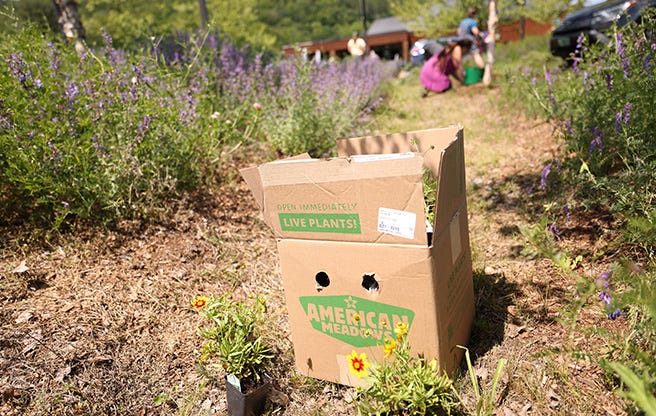There are several good red phlox hybrids, but this is a standout. As perennial expert, Allan Armitage writes in his best-selling book, Starfire has striking cherry red flowers which immediately catch the eye, even from a distance.
Why Phlox should be the backbone of your garden. They're beautiful. They're easy. And no matter what else you grow, you cant beat their display. In fact, probably no group of plants adds more color to American perennial gardens than phlox. They just happen to be the perfect plant--tall enough to show the flowers over the others, heavy bloomers at the right time with big colorful flower heads, and best of all--a nice long season of bloom. Most every good perennial garden has an extra measure of phlox plants. In yours, plant a few and then notice which do the best, and then get more of those. Repeated color groups in the garden assure the great colorful display everyone wants.
The one problem: Mildew. Be ready. There's no escaping it. All Tall Garden Phlox (except the famously mildew-resistant David) are usually attacked by powdery mildew. Its a sort of gray dust-like blight you'll start noticing on the leaves, just as the plants have grown up and are getting ready to bloom. The minute you see it, go directly to the garden center and buy a container of fungicide for phlox mildew. I know it sounds like trouble, but its really not, and believe me, its worth it. If you ignore the mildew, your beautiful phlox plants will be an ugly shriveled mess in just a couple of weeks. It doesn't kill the plants, it just ruins them for the year. Some say good air circulation prevents it, but don't you believe it. Phlox simply get mildew, and you need to spray, probably just once...then your plants will go right on and bloom all summer for you with beautiful leaves and flowers.
They're great for cutting, too. Need a big bouquet? Just of few of these multi-flowered stems will do the trick, with lovely fragrance and fabulous color. Add a few lilies, and you have a knock-out arrangement anyone can do. So be sure to grow enough phlox for cutting, too.
After bloom, simply cut down the flower stems about halfway, (Its not botanically correct, but lots of gardeners snap them; the strong stiff stems snap off easily) and your tough, hardy plants will be ready to light up for you again next year.
Yes, they're North American Natives. Very few American gardeners know it, but almost all phlox species are North American wildflowers, as native as our goldenrods and black-eyed susans. But since we ignored them for years, European hybridizers (mostly German) took the wild versions back to Europe and created the fantastic hybrids we all enjoy today.




